

“It is at night that it is beautiful to believe in the light!”
Edmond Rostand
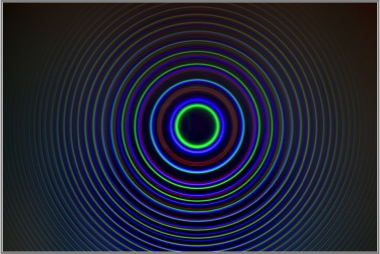
Light is a formidable messenger for those who know how to make it speak. All you have to do is make it interact with matter so that it manifests itself and tells us its story. Without it, it remains invisible. LATMOS has been working for several decades to exploit and decipher the secrets that light conveys to us, in order to:
– understand the physicochemical mechanisms governing planetary atmospheres;
– study the formation of planets and small bodies in the solar system;
– analyze the physics of the heliosphere.
A laboratory with a very strong instrumental component, LATMOS has made optical instrumentation one of its core businesses. In order to meet different scientific needs, the laboratory develops, designs and produces optical instruments deployed either from the ground or from balloons, planes or satellites.
Integrated into the technical department of the laboratory, the optical department now has five optical and instrumental engineers with complementary skills and has a substantial set of measurement and calibration resources dedicated to spectrometry, interferometry and lidar instrumentation. .
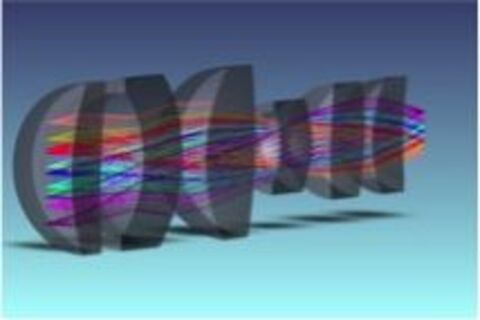
“Knowledge is the only thing that grows when we share it.”
Socrate
To carry out these missions, the optical department has know-how that covers a wide range of skills:
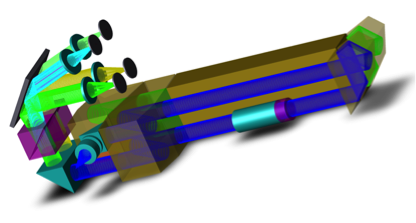
Thanks to a team of highly qualified engineers in calculation and optical design, the LATMOS optical department is capable of providing the best solutions for the most ambitious projects. Thanks to adapted software tools such as Zemax™ (optical sizing and tolerancing) and Matlab (physical simulations, performance calculations), engineers design optical systems adapted to different scientific needs.
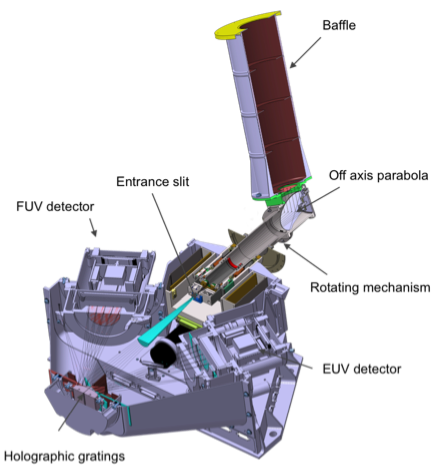
Depending on the environment in which the optical system will be used (satellite, airplane, ground station), and the expected performance, the optical department engineers write the optomechanical specifications in order to provide the mechanical design office with the specifications. set and subsets in terms of:
The engineers also carry out the drawing of the optical elements (lenses, mirrors) according to standard 10 110 and work with the CATIA V5 software for the design of the mechanical supporting parts.
The mission of the optical department is to respond to the emerging scientific needs of the laboratory through the design, production, integration and qualification of innovative optical systems. The optical service also monitors and updates instruments deployed on several geophysical sites around the world, in order to guarantee their almost daily operation.
The preparation of future projects is almost systematically accompanied by prospective research allowing technological advances to be made or the maturity of existing technologies to be improved. Driven by this desire for innovation, the optical department is involved in the “Research and Technology” activities proposed by the National Center for Space Studies (CNES) as well as during calls for projects from the National Research Agency (ANR).
In addition to the various space and ground projects in which it is involved, the optical department ensures active technological monitoring with regard to new techniques and the most recent optoelectronic components available on the market. This technological monitoring is fueled by a very good knowledge of the industrial fabric of suppliers and manufacturers of optoelectronic components, as well as by a regular state of the art of the scientific and technical environment.
Concerned about ensuring the sustainability of actions and memory capital to compensate for the loss of acquired knowledge, the optical department places great emphasis on the transmission of its technical heritage and the perpetuation of know-how.
Optical service engineers are able to integrate complex optomechanical systems intended for terrestrial or space applications. Thanks to the facilities of the OVSQ Integration and Test Platform (PIT), available on site, the teams have access to 150 m2 of clean rooms (ISO 5 and ISO 7) which are themselves equipped with the latest cutting-edge equipment in terms of three-dimensional controls and measurements, optical benches and component storage.The calibration and performance validation phases are fundamental steps when creating an optical instrument. Calibrations allow the response of the instrument to be evaluated in terms of transfer function; they provide physical meaning to the measurements provided by it and validate the performances predicted by the modeling.

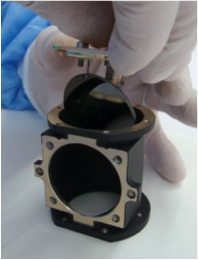
Specialists, among other things, in UV spectrometry, LATMOS engineers work at the limits of the ultraviolet spectrum, at wavelengths of up to 30 nm! However, for wavelengths less than 200 nm (see classification of the electromagnetic spectrum), the atmosphere is no longer transparent enough for light to propagate. Engineers must then place their experiments in vacuum chambers, at pressures of some 10-6 mbar.
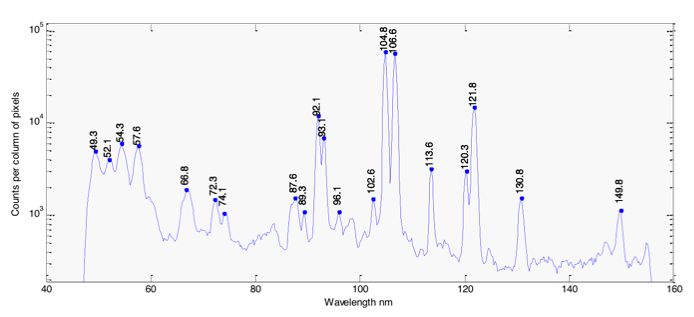

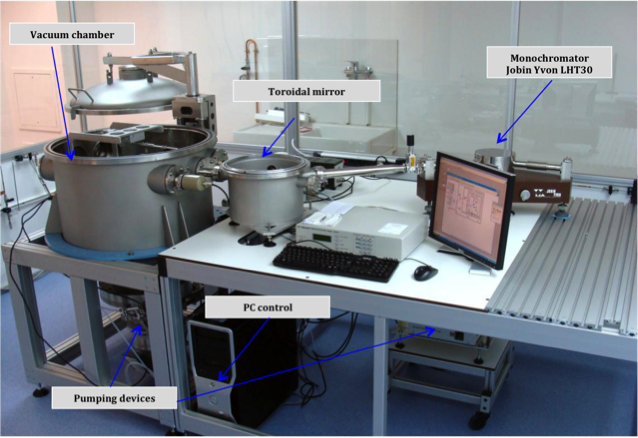
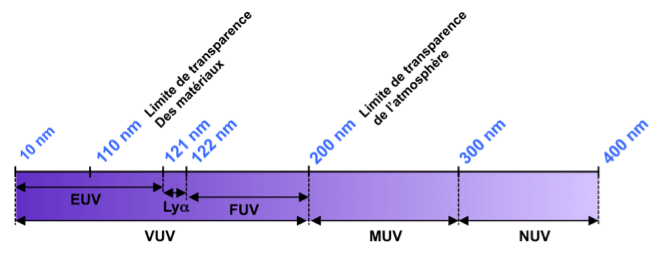
To meet its needs, LATMOS has developed instrumental means making it possible to carry out optical measurements, under vacuum, in the spectral range: 30 nm – 200 nm. The entire device, placed in a clean space (iso7), makes it possible to carry out spectral and radiometric calibrations of the instruments as well as to characterize the reflectivity and transmission of optical components (mirrors, diffraction gratings filters, windows). This equipment has enabled in particular the qualification of the flight model of the PHEBUS instrument on board the ESA-BepiColombo space mission, as well as the reflectivity characterization of materials and optical treatments such as silicon, aluminum, silicon carbide, platinum, etc.

LATMOS brings together 6 technological sectors including the microwave sector which can also be called the microwave sector.
The objectives of this sector are the documentation of atmospheric environments (clouds, precipitation, water vapor, turbulence, fog, etc.) of continental surfaces (roughness, humidity) and oceanic environments (wind, waves, etc.), -shallow soils, and interactions between these environments, from the microscopic scale to the regional scale.
The team involved brings together researchers, teacher-researchers, engineers and technicians. It designs and develops remote sensing instruments (polarimetric and Doppler radars) and implements them through dedicated campaigns (ground, airborne, space).
The main scientific themes of LATMOS relating to microwaves are:
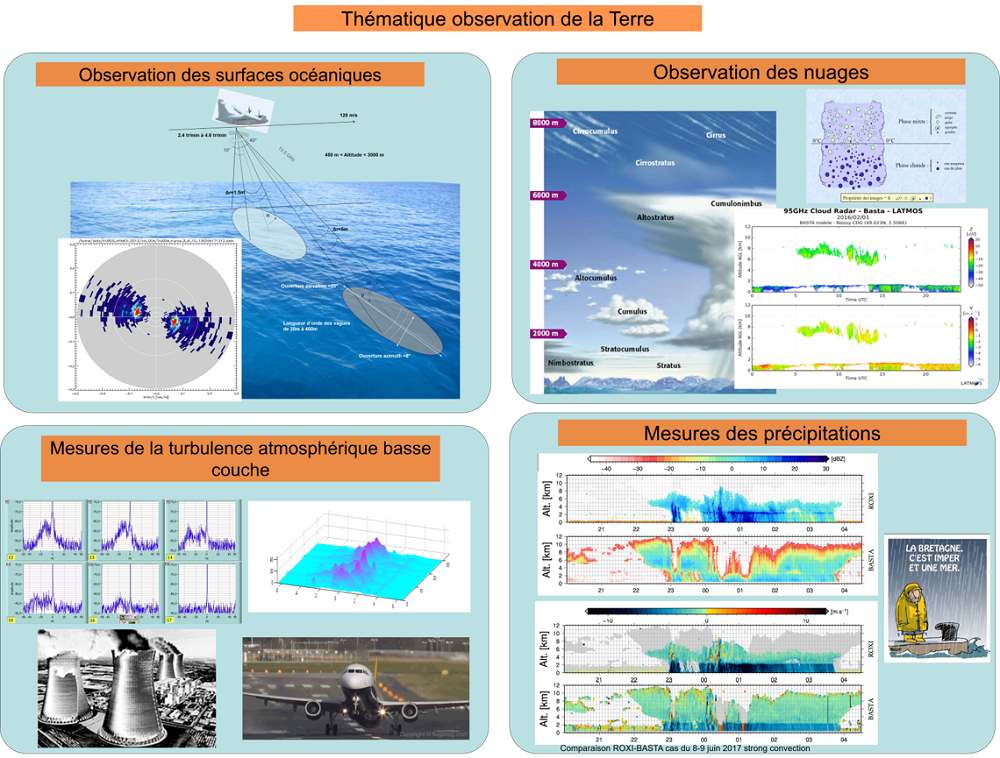
The Hyperferences technological sector brings together personnel from the SPACE and IMPEC scientific teams and the ELECTRONICS, MECATOP and INFOPROJ technical departments.
Contacts: Valérie CIARLETTI, Julien DELANOË, Christophe LE GAC
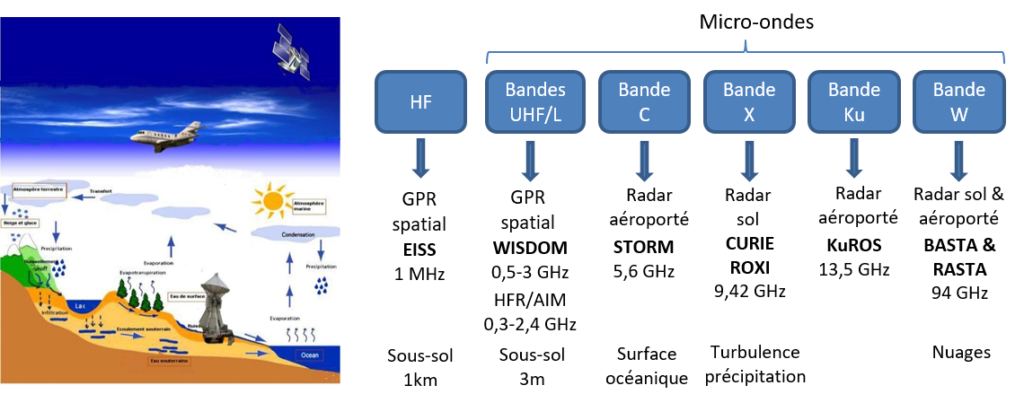
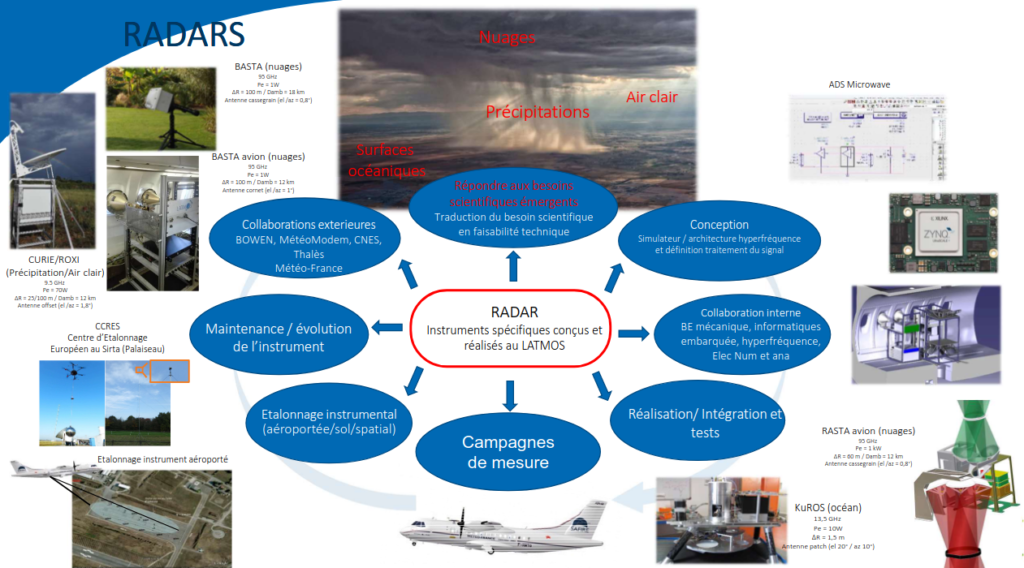
LATMOS has equipped itself with the necessary tools to fulfill its missions both upstream of projects (design support tools, simulation) and to be able to validate and test its electronic developments, both analog and digital.
| Measuring Instrument | Reference | Frequencies | Option |
|---|---|---|---|
| Spectrum Analyzers | Rhode&Schwarz FSU | 26.5 GHz | 18 dBm - tracking generator 40 GHz |
| Spectrum Analyzers | HP E4407B | 26.5 GHz | tracking generator 3 GHz |
| Spectrum Analyzers | HP 8561B | 6.5 GHz | |
| Network Analyzers | HP | 1.6 GHz | (vector) |
| Network Analyzers | Rhode&Schwarz ZVL6 | 6 GHz | (vector) |
| Frequency Synthesizers | Rhode&Schwarz SWM05 | 18 GHz | |
| Frequency Synthesizers | Rhode&Schwarz SMF 100A | 22 GHz | 17 dBm |
| Frequency Synthesizers | Agilent E8257D | 20 GHz |
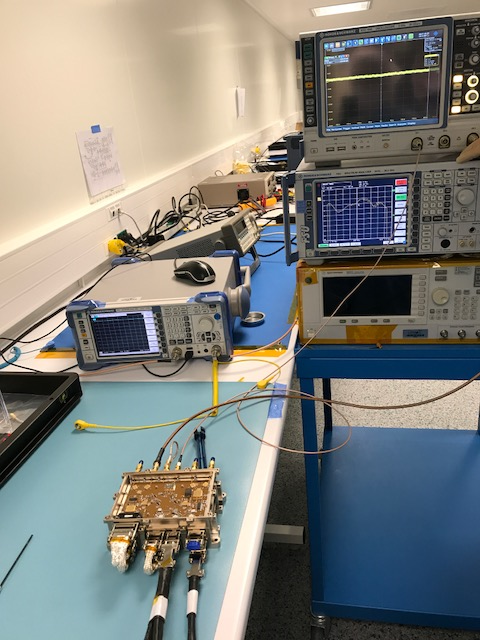
| Measuring Instrument | Reference | Frequencies | Option |
|---|---|---|---|
| Spectrum Analyzers | Rhode&Schwarz FSU | 26.5 GHz | 18 dBm - tracking generator 40 GHz |
| Spectrum Analyzers | HP E4407B | 26.5 GHz | tracking generator 3 GHz |
| Spectrum Analyzers | HP 8561B | 6.5 GHz | |
| Network Analyzers | HP | 1.6 GHz | (vector) |
| Network Analyzers | Rhode&Schwarz ZVL6 | 6 GHz | (vector) |
| Frequency Synthesizers | Rhode&Schwarz SWM05 | 18 GHz | |
| Frequency Synthesizers | Rhode&Schwarz SMF 100A | 22 GHz | 17 dBm |
| Frequency Synthesizers | Agilent E8257D | 20 GHz |

LATMOS develops active remote sensing instruments based on innovative technologies.
These instruments are used to carry out studies on atmospheric environments, continental and oceanic surfaces and shallow subsoils. They also make it possible to validate space missions (current or future).

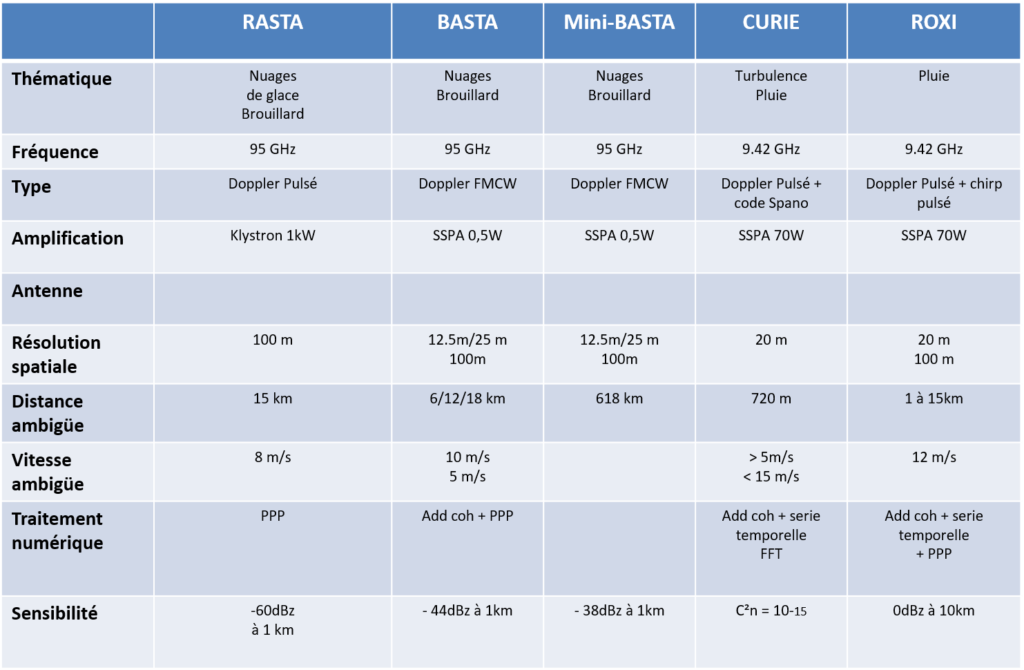

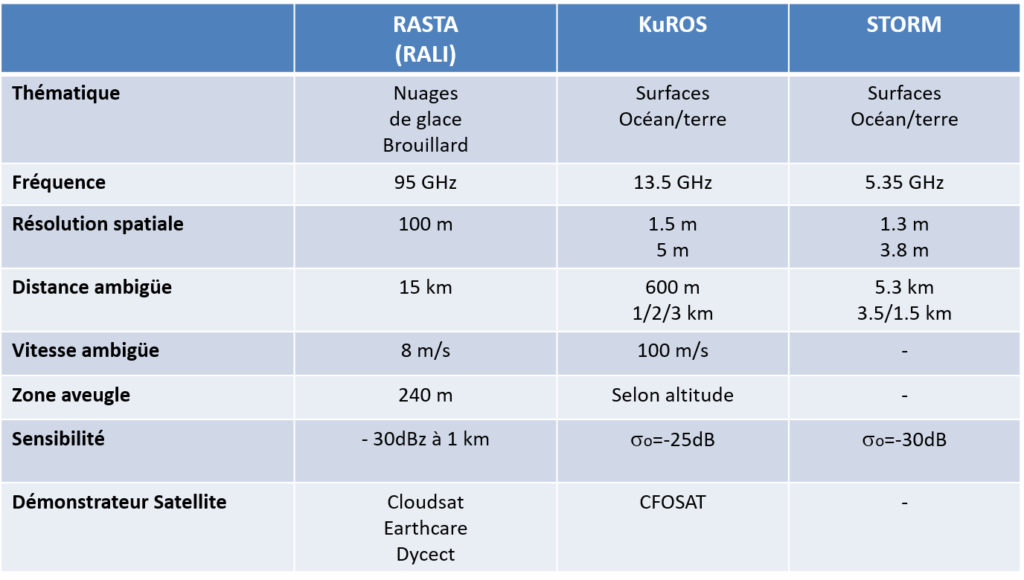
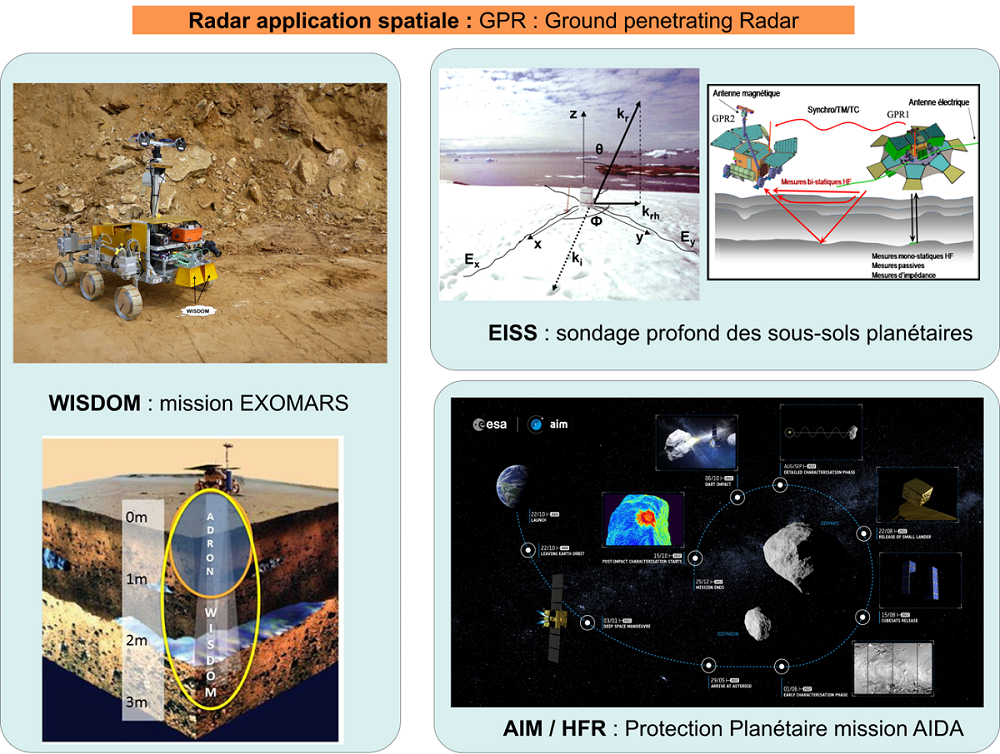


Some LATMOS instruments are integrated into platforms to be able to take advantage of synergies with other instruments.

Field measurement campaigns make it possible to validate the operation and performance of the instruments developed at LATMOS.
EXAEDRE (ROXI, BASTA) 2018

AMMA
EXAEDRE (ROXI, BASTA) 2018
ICE-GENESIS (ROXI, BASTA) 2021
Megha-Tropiques I (RASTA) 2010
Megha-Tropiques II (RASTA) 2011
HyMex (RASTA) 2014
HAIC (RASTA) 2013 et 2015
EXAEDRE (RASTA) 2018
ICE-GENESIS (RASTA) 2021

LATMOS develops scientific instruments, is equipped with cutting-edge equipment, and has scientific and technical expertise in the field of physico-chemical analysis through 3 main experimental approaches:
The objective of experimental reactors is to reproduce and study in the laboratory the reactivity of the upper planetary atmospheres. Subjected to intense solar radiation in the distant ultraviolet range (VUV domain: wavelengths less than 200 nm), the upper planetary atmospheres are the seat of poorly understood reaction systems potentially responsible for the formation of complex molecules.
The team mainly studies the atmosphere of Titan, Saturn’s satellite, for which the Cassini space mission revealed intense chemistry producing solid aerosols at more than 1000 km altitude. These aerosols are organic in nature and constitute extraterrestrial materials of exobiological interest.
Examples of work in progress at LATMOS:
ERC PRIMCHEM project (PI N. Carrasco)
R and T project transparent windows at VUV
The Spectrometry for Space team participates in several developments of mass spectrometers for space missions (CAPS/CASSINI instrument – Saturn, IAP/DEMETER instrument – Earth, PICAM/Bepi-Colombo – Mercury, ROSINA/ROSETTA – Comet 67P) or as part of the Research and Development program (CosmOrbitrap and NIMEIS project).
The development of spatializable instruments imposes very strong resource constraints. The designs of such an instrument must therefore limit the weight, consumption, volume and quantity of information produced, while preserving optimal measurement performance and guaranteeing operation in a very restrictive radiative, thermal and mechanical environment.
Examples of work in progress at LATMOS:
NanoPot: controlling the charge of a nano-satellite using an electron source using an emitter based on a Carbon nano-tube
CosmOrbitrap: very high resolution mass spectrometry for space exploration
Ionization source with Carbon Nano-Tube: development and testing program for an electron source using carbon nano-tubes
Gas chromatography is used at LATMOS to study the chemical composition of planetary or terrestrial environments, and to characterize planetary analogues (natural or synthetic) or soil samples taken by space probes. The “onboard” nature of this instrumentation, whether on board space probes or terrestrial measurement platforms, makes the instruments that are developed specific. LATMOS has more than 30 years of experience in this field through the Cassini-Huygens, Rosetta, Phobos-Grunt, Mars Science Laboratory, ExoMars and Dragonfly space missions.
LATMOS’s expertise in the field of gas chromatography and particularly in instrumental development for space missions has allowed us to design and develop portable and miniaturized chromatographs such as the MAVERIC instrument (Miniaturized Autonomous and VERsatIle gas Chromatograph). The performance of this analyzer in terms of repeatability and sensitivity will allow its deployment for measuring the concentrations of volatile organic compounds (VOCs) in ambient air on industrial sites, observation sites in urban, peri-urban, rural areas and sites in extreme environments. LATMOS is also carrying out an innovative project to develop an ultra-miniaturized chromatograph based on NEMS and MEMS (Nano/Micro Electro Mechanical System) components.
As part of these projects, LATMOS is in collaboration with academic partners and French (APIX Analytics, ESIEE Paris) and European (GL Sciences) companies for the development of key components of such instruments: gas injection systems and liquid, chromatographic column-based separation system and detection system.
Among the development work on gas phase chromatographs at LATMOS, we cite:
The laboratory’s physico-chemical analysis platform is equipped with instrumentation mainly developed in-house, making it possible to interpret and reproduce in the laboratory the measurements collected by space missions aimed at studying the bodies of the solar system in their solid and gaseous component, such as the atmosphere and the structure of the bodies of telluric planets (Mars, Venus, Titan) and primitive objects (comets and asteroids). The complex chemistry observed is reproduced in the laboratory and the organic and inorganic matter is analyzed in order to better understand the process that can lead to the appearance of life and its evolution (exobiology). The search for possible processes governing the evolution of simple organic matter towards more complex structures is also investigated.
The expertise is based on the creation of experimental devices allowing the production of organic aerosols produced in a plasma enclosure and their study by IR spectroscopy, by mass spectroscopy of neutrals and ions, by emission spectroscopy and by laser desorption (L2DI). In addition, we have developed expertise in the field of the study of the photochemistry of planetary atmospheres in the field of VUV on the one hand by developing laboratory VUV sources and on the other hand by coupling to the VUV lines of a synchrotron.

The expertise is based on the creation of experimental devices allowing the production of organic aerosols produced in a plasma enclosure and their study by IR spectroscopy, by mass spectroscopy of neutrals and ions, by emission spectroscopy and by laser desorption (L2DI). In addition, we have developed expertise in the field of the study of the photochemistry of planetary atmospheres in the field of VUV on the one hand by developing laboratory VUV sources and on the other hand by coupling to the VUV lines of a synchrotron.

The main objective of the mass spectrometry of terrestrial and planetary atmospheres developed at LATMOS is the characterization of planetary and terrestrial atmospheres with innovative in situ measurement techniques based on original electrostatic designs and new technologies (carbon nano-tubes).
The instrumentation linked to this field is mainly based on the development of space mass spectrometers and the development of innovative ionization sources.
I. Developments of mass spectrometers for space missions (CAPS/CASSINI instrument – Saturn, IAP/DEMETER instrument – Earth, PICAM/Bepi-Colombo – Mercury, ROSINA/ROSETTA – Comet 67P) or as part of a Research program and Development (CosmOrbitrap and NIMEIS project):
The development of spatializable instruments imposes very strong resource constraints. The designs of such an instrument must therefore limit the weight, consumption, volume and quantity of information produced, while preserving optimal measurement performance and guaranteeing operation in a very restrictive radiative, thermal and mechanical environment. Test of an original compact electrostatic optic (NIMEIS) allowing optimization of the mass and energy analysis of the probed medium while limiting the necessary resources (weight, volume and power consumed).
II. Development of ionization for mass spectrometry:
one of the areas of research and development focuses on the development of electron emitters using carbon nano-tubes with low consumption (less than ten mWatt), cold (operating without heating) and having good performance (in terms of emitted electron current).
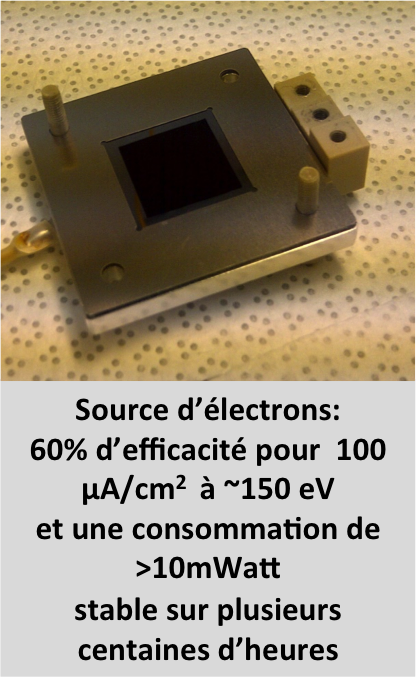
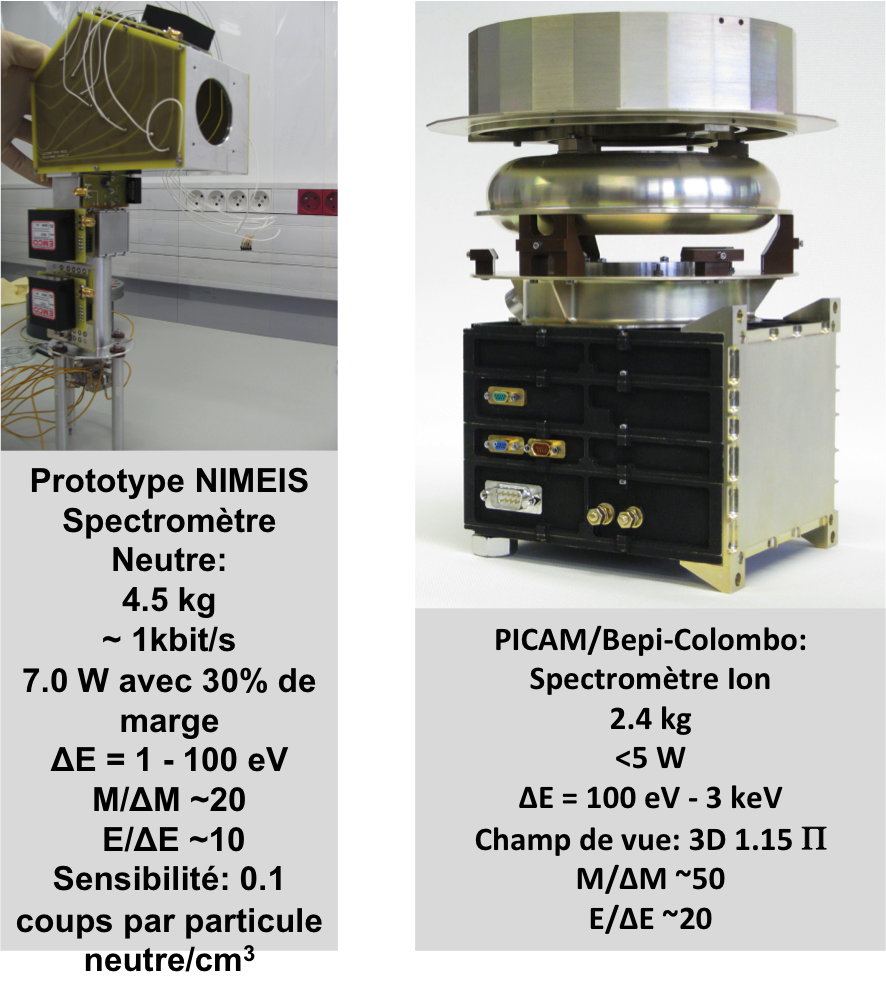

In support of this experimental research, significant laboratory activity is carried out around digital modeling and simulation work. This work makes it possible to put the acquired data into a global context, but also to deduce additional information by extrapolation. They are based on the development of digital “computer” codes which rely on physical and chemical formalism (physics and chemistry of the atmosphere, interactions between electromagnetic waves and the natural environment, digital simulation of physical processes in the plasmas of the solar system , etc.), as well as on input data (in situ analyses, observations, laboratory data for example).


LATMOS research activities focus on the study of the fundamental physicochemical processes governing the terrestrial and planetary atmospheres and their interfaces with the surface, the ocean, and the interplanetary environment. In this context, observations have an important role in advancing knowledge. The laboratory is heavily involved in providing scientific instrumentation generating a significant amount of data.Some LATMOS teams also participate in the processing and distribution of data from instruments not provided by the laboratory but necessary for scientific studies carried out at LATMOS.
These activities and responsibilities involve technical support (design, development, operation, maintenance) of various software applications for the exploitation of experiments and their data, digital codes, as well as expertise in mathematical and statistical methods. and on intensive scientific computing in order to design or optimize algorithms for processing observation data (satellite and in-situ) and assimilation of this data into models.
Some projects require “operational” data production which relies on the expertise of LATMOS engineers in designing observation plans for the various scientific experiments in which the laboratory participates (ground instruments or space missions), data recovery, execution of data processing chains and delayed-time validation of experimental measurements, organization of data and monitoring of their exploitation until their visualization, archiving and provision of the data to our French or international partners (other laboratories or space agencies), either through dedicated websites hosted in the unit, or through archiving centers managed by space agencies (CNES, ESA, NASA, etc.) or virtual observatories (VOSCAT for example).
LATMOS has thus developed: